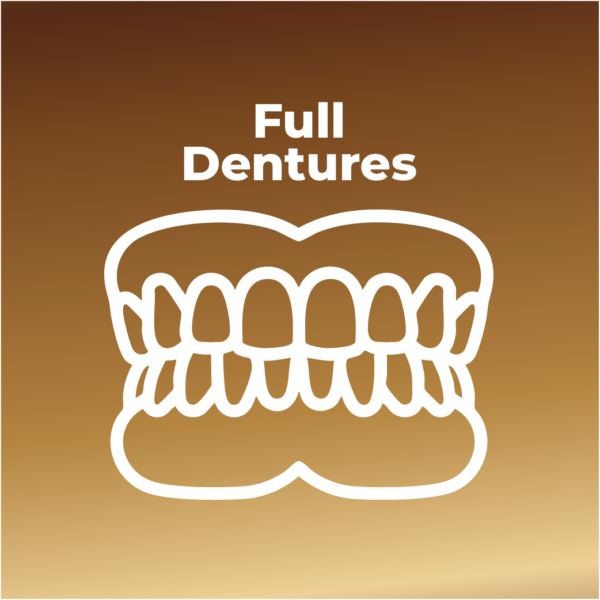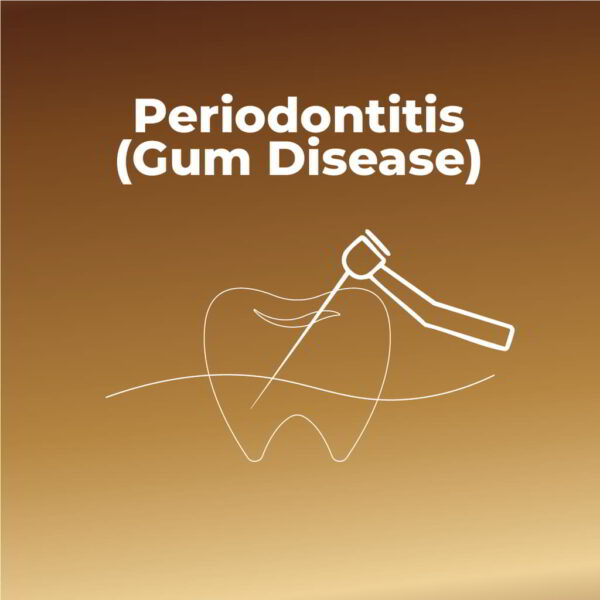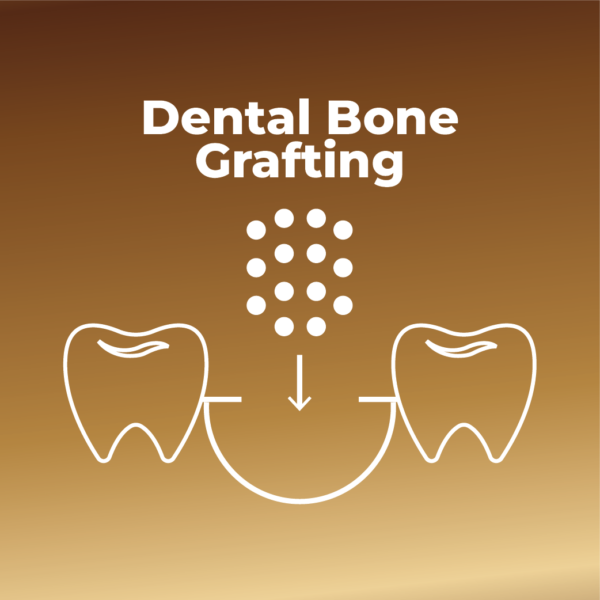What Is A Dental Bridge?
A dental bridge is a fixed solution for missing teeth. Made from metal or porcelain, dental bridges are similar to crowns, but rather than replacing just one damaged tooth, a bridge covers a gap left by missing teeth by using the neighbouring teeth as an anchor to support false teeth.
Our dental bridges are priced equivalently to our dental crowns of the same quality levels. For example, a 3-unit bridge made with our Luxe Quality porcelain would cost the same as 3 Luxe Quality porcelain crowns.
Dental bridges can come in various sizes to replace multiple teeth. The size of a unit includes the crowns on the two neighbouring teeth.
- A 3-unit bridge would cover a gap of 1 tooth.
- A 4-unit bridge would cover a gap of 2 teeth.
What Are The Different Types Of Dental Bridges?
There are many ways a bridge can be attached. Your dentist will help you decide what the best type of bridge is for your situation.
Fixed/Conventional Bridges: These bridges require the capping of the two neighbouring teeth. We then fuse the false tooth onto the caps on each side. This is a popular choice because it offers the most strength and support.
Cantilever Bridges: Similar to conventional bridges, but only one neighbouring tooth is capped. This is useful if you only have natural teeth on one side of the gap to be bridged and can’t have a crown attached on the other side to support the bridge. Cantilever Bridges are less common as they are not as strong and durable.
Maryland Bridges: These bridges require little to no preparation. Instead, the false tooth is bonded onto the adjacent teeth using wings. Maryland Bridges are used when you don’t want neighbouring teeth to be damaged. They are less strong than other methods of securing a bridge and are therefore only suited to the front teeth.
If you’re unsure which bridge type is suited to your needs, your dentist will make the decision for you based on your overall oral health and the position of the teeth to be replaced.
What Material Are Dental Bridges Made From?
Dental bridges can also be made from a variety of materials, creating several options to customise your dental bridge to your individual needs.
Metal Dental Bridges: Metal dental bridges are strong and very durable, making them great for use at the back of the mouth. They’re also cheaper to make and are a more affordable dental bridge option for situations where the bridge will not be visible. Due to their unnatural appearance, metal dental bridges are not advised for front teeth.
Gold Quality Porcelain: Our gold quality porcelain dental bridges are made from high quality porcelain backed with a metal substructure, giving you the beautiful appearance of porcelain with the strengthening qualities of metal! Our dentists will provide a complimentary shade matching appointment to ensure your bridge blends in seamlessly with the shade of your existing teeth to create a more natural appearance.
Luxe Quality Porcelain: Our signature Luxe quality porcelain is our equivalent to the globally recognised Zirconia and E-Max porcelain. Thanks to a compressed porcelain substructure, our Luxe quality porcelain is the strongest and most natural looking material for dental bridges. Our Luxe quality bridges mimic the shade variations and translucency of real teeth, creating a seamless transition between your bridge and your real teeth, all without compromising on strength! This is the best, most natural dental bridge for front teeth that will be visible when you smile. It is also strong enough to withstand use on the back teeth too for those seeking a white smile all over.
How Are Dental Bridges Fitted?
Dental bridges can be easily fitted by most cosmetic dentists, and are applied similarly to crowns. Here’s how we fit a dental bridge in 3 simple steps!
Step 1 – Consultation
Each of our dental bridge treatments starts with a consultation with one of our expert cosmetic dentists. During this step of your treatment, your dentist will perform an assessment of your overall oral health and make sure bridges are suitable for you. We will perform a series of scans using the latest digital dentistry technology to create an accurate digital model of your mouth, allowing us to create your bespoke dental bridge. Your dentist will also help you decide the material to use for your bridge, and will tell you what method they will be using to fit your dental bridge based on the condition of your surrounding teeth and the size of the gap to be bridged. You will receive a full treatment report, along with a breakdown of all costs involved. Your consultation is the best time to express any concerns or questions you may have about the treatment process – our dentists are always happy to help with any concerns.
Step 2 – Preparation
Once you’ve decided to go ahead with your dental bridge treatment, we will need to prepare the surrounding teeth that your dental bridges are being attached to.
If you’re having a Fixed, Conventional, or Cantilever dental bridge fitted, then we will need to shave down the neighbouring teeth. We always shave as little as possible, being careful to preserve as much of the tooth as possible. This can be mildly invasive, but will be painless due to the use of local anaesthetic.
If you’re having a Maryland bridge fitted, we’ll have to prepare the backs of the teeth where the wings will attach by reducing them slightly. This is much less invasive than other bridge types.
We then fit a temporary bridge in the gap, letting you be confident in your smile whilst waiting for your permanent dental bridge.
Step 3 – Final Fit
Once your permanent dental bridge has been made by the dental lab, we can fit your final smile!
We will take off your temporary bridge and fit your final bridge. This step should not be painful.
Your permanent dental bridge will be bespoke made to suit your smile using high quality materials for a natural appearance and comfortable feeling.
Can I Have My Dental Bridges Prepared And Fitted In Just One Appointment?
Yes, you can! At our flagship dental practice in Bolton, we house both a dental clinic and an on-site laboratory where we can prepare your teeth at the same time as your dental bridge is being made. Relax in our VIP waiting area whilst we put the finishing touches on your new smile, then leave with a brand new set of teeth – with dental bridges in one day!
As one of the only integrated dental clinic and laboratory facilities in the North-West, we’re able to offer this unique service, attracting patients from across the country for our same-day smile-makeover treatments!
FAQ
Do Dental Bridges Feel Different To Normal Teeth?
Dental bridges may feel a little bit different for the first few weeks whilst you get used to them, especially if you’ve had a missing tooth for a long time and have gotten used to having a gap in your teeth. Over time, you’ll grow accustomed to the new sensation in your mouth, and your bridge will feel normal.
Do Dental Bridges Hurt?
Dental bridges shouldn’t hurt when they’re being fitted. We’re able to perform a pain-free dental bridge procedure thanks to local anaesthetic, but you may notice some discomfort after treatment as the numbing wears off. If you experience persistent pain or sensitivity for more than a few days, see your dentist.
How Do I Maintain My Dental Bridges?
Maintaining your dental bridge is simple with some small changes to your oral hygiene routine.
Dental bridges usually have a small space between the false tooth and the gum line to allow for cleaning. Brush your teeth as normal, then use dental floss, an interdental brush, or a floss threader to clean underneath your dental bridge to remove any plaque and food debris that has built up under your dental bridge. To this every time you brush your teeth. Even though your dental bridge is made from porcelain or metal, the anchor teeth as well as the gum underneath can still decay, so maintaining a good oral hygiene routine is still important. Brush your teeth and clean your bridge twice a day, and have regular professional cleans with your dentist at least once every 6 months.
Can I Eat Normally With A Dental Bridge?
In addition to adjusting your oral hygiene routine, you may need to make some adjustments to what you eat and how you eat in order to keep your dental bridge looking its best.
Certain hard and crunchy foods such as apples should be cut into small and manageable pieces, rather than biting directly into them. Foods like carrots should be grated if you’re planning to eat them raw, otherwise they should be steamed until tender and soft.
Some foods are better off being avoided all together such as:
- Chewy toffees
- Popcorn
- Nuts
- Chewing ice
- Sticky sweets
- Corn on the cob (remove from the cob rather than biting directly)
You should also avoid using your teeth as a tool – for example for opening packages or holding things in your mouth – and avoid chewing things that aren’t food such as nails and pens.
Dental Bridges vs Dentures vs Implants: Which Is Better?
Dental bridges, dentures, and dental implants all fulfil the same purpose – they replace missing teeth! Which one is better varies from patient to patient and depends on what exactly it is you are looking for, as well as your existing oral health and current medical conditions.
Dentures make a good solution for people looking for a removable replacement for teeth that is easy to clean. Dentures are also cost effective.
Dental bridges are a better option for people looking for a permanent and natural looking replacement for missing teeth without the need for surgery.
Dental implants are highly durable and very natural looking. They function just like real teeth, but may not be suitable for people who do not want to undergo oral surgery. Dental implants are also more expensive, and may not fall within every patient’s budget.
No one particular missing teeth solution is better, it all depends on each individual patient’s dental needs.
How Long Do Dental Bridges Last?
Dental bridges can last years with proper care. On average, most high quality dental bridges can last between 5-15 years, but have been known to last longer with diligent care. How long your dental bridge lasts depends on how you care for your dental bridge and the quality of the materials used.
Can Dental Bridges Be Repaired?
If your dental bridge has come loose from one of the anchor teeth and you’re looking for an emergency dental bridge repair, we can re-cement your dental bridge as part of our emergency dental care service.
If your dental bridge has been chipped or cracked, we may be able to perform a quick dental bridge repair using composite resin, but the effectiveness of a repair depends on the severity of the damage. In some scenarios, we may not be able to repair a dental bridge and will recommend a replacement. We can only determine if your bridge can be repaired by seeing your teeth and making an assessment.
How Do I Clean My Dental Bridge?
Cleaning your dental bridge takes a little bit of practice – unlike a denture, a dental bridge cannot be removed for cleaning, so it takes a bit more effort to ensure your dental bridge is properly cleaned every night.
Dental bridges often have a small space between the false tooth and the gum, which allows you to clean all sides of your dental bridge using dental floss or an interdental brush. It’s also important to floss the surrounding crowns that support the bridge, as the natural teeth underneath the crown can still develop tooth decay.
You need to clean your dental bridge twice a day just like you do with your normal teeth, taking extra care with your dental bridge. Use a soft toothbrush and a non-abrasive toothpaste to avoid damaging your dental bridge.
What Will Happen If I Don’t Have Missing Teeth Replaced?
Whilst it may be tempting to ignore a missing tooth, especially if it’s not visible, one missing tooth removes the support for the teeth beside it.
Very quickly, one missing tooth can become three missing teeth, as the teeth on each side are unsupported.
It’s always better to get missing teeth replaced, even if it’s just with a temporary solution.
At Synergy, we can provide a range of solutions to fit any budget. Our expert dentists can offer affordable dental bridges for missing teeth, as well as a range of other options. We even offer dental bridge financing options to allow you to spread the cost of your treatment, as we believe cost should never be a barrier to maintaining good oral health.









Patient Reviews
Apply for Dental Finance!
Using our finance calculator you can approximate your total cost for dental work and choose to repay from multiple options.
Other Dental Treatments
-

Valplast® Flexible Dentures
£1,150 Select options This product has multiple variants. The options may be chosen on the product page -

Dental Hygiene
£50 – £175Price range: £50 through £175 Select options This product has multiple variants. The options may be chosen on the product page -

Periodontal Assessment
£30 Select options This product has multiple variants. The options may be chosen on the product page -

Dental Bone Grafting
£500 – £2,400Price range: £500 through £2,400 Select options This product has multiple variants. The options may be chosen on the product page
